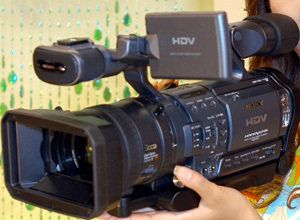
Perhaps the initial appeal of the documentary film Make, for some, comes from the promise of a soundtrack that in part features music by Sufjan Stevens (his 2010 album The Age of Adz cites one of the film's featured artists, Royal Robertson, as inspiration). Perhaps it stems from the curiosity of the indie music label Asthmatic Kitty Records releasing an art documentary. Whichever way one arrives at Make, released on June 21, the indelible emotional resonance remains.
MAKE the documentary from Asthmatic Kitty on Vimeo.
The power of the documentary as a medium comes from the telling of the timely, yet untold story. In Make, directors Scott Ogden and Malcolm Hearn tell four distinctive stories of earnest lives lived on the margins of American society. The structure of the film is tidy and straightforward: a quadruple profile comprised of four cycles containing four scenes each, which detail each artist respectively. Viewers of the documentary proper who might be anticipating the excavation of the artists' aesthetic considerations and the artworks' relevance within the greater art world are likely to be disappointed (the greatest insights into the art itself can be found in the DVD's Special Features).
It is obvious that while the mental states of the artists undoubtedly contribute to the art itself, it is the process of making art that enables the makers to transcend their own physical and psychological limitations. Judith Scott is deaf and has Down's syndrome. Ike Morgan has schizophrenia. Hawkins Bolden is blind. Royal Robertson has paranoid schizophrenia. And yet their limitations do not define them as artists, but rather serve only as the prisms through which the creators' inherent talents shine.
The art exists apart from life as we -- the outsiders to the outsider artists -- see it, and it must be encountered on its own terms. In terms of the process of creation, the only perspectives that matter are those of the artists themselves, views that are supplemented by anecdotal interviews with those who were closest to the creators, along with art historians and others.
Herein is one of the documentary's subtle triumphs -- nowhere to be found are self-important talking heads brimming with insufferable, arty pontifications, imposing their superficial interpretations of the tortured artist. And unlike another outsider artist documentary, Jeff Feuerzeig's The Devil and Daniel Johnston, the propagation of the perception that the artist's mental illness is what makes the art great is absent. Feuerzeig permitted the implication that much of the justified allure of Johnston's art came from his suffering. While that may be true, it is more telling of we the patrons than it is of Johnston himself. The problem with this premise is that it is predicated on the lie that the artist must be tortured in order to create truly great art.
The film's archival photography is truly breathtaking and revelatory -- images of the artists with significant family members (or for that matter, images that reveal the absence of a loved one) imbue the film with an immediacy that punctuates the overall sense of ephemera that permeates. These still, intimate moments remind us something that the film seems eager to impart: this is a story not about art but about life. The four artists seem, for the most part, completely oblivious to the greater implications of their creations as "art." Their work results from a mysterious inner impetus, a blessed compulsion -- the absolute, desperate need to create.
That's not to say that aesthetic value is in short supply. Judith Scott's intensely tactile objects -- the result of mummifying objects such as sticks or a fan in copious amounts of colored yarn -- can look like either like peculiar and striking artifacts or homespun time capsules, depending on the piece. Hawkins Bolden's yard is a veritable sculpture garden, home to numerous industrial scarecrows made of metal pots, bits of hose, and other various bric-a-brac. This community of nightmarish effigies serves the practical purpose of frightening birds, but to look at these manufactured men, one cannot escape a pervasive feeling of wonder and dread. The art of the prolific sign-maker Royal Robertson -- undoubtedly the most well-known of the four artists -- is possessed by an irrepressibly driven internal mythology, a futurism melded with the fury of the Old Testament prophets. The painter Ike Morgan is arguably the most "natural" artist of the group, at least in the conventional sense. His brushstrokes and overall application of paint are of the neo-expressionist variety, particularly in the way that they endow his portraits -- often of famous figures such as American Presidents Washington and Lincoln -- with a certain psychological acuity. His use of color is almost Fauvist.
The poignancy of the brilliantly paced, nearly 70-minute Make comes from its unwavering focus on the individual creator's connection to his or her creation. The resulting implication is that the ultimate value of art has little to do with the completed object that others admire. Rather, the real beauty of art is in the process, and in the conception and development of visions. Of the many interviews contained in the film, the words of art historian and psychotherapist John MacGregor are issued as a kind of challenge to the viewers: "[Judith Scott] has transformed her existence from one of total meaninglessness and abject deprivation to where there's no doubt at all that she's found meaning in this life of hers, something most of us never do manage."
